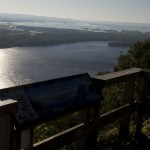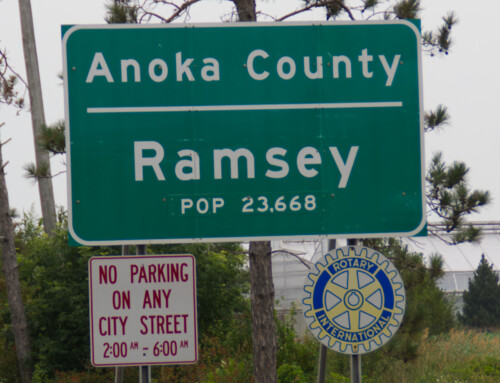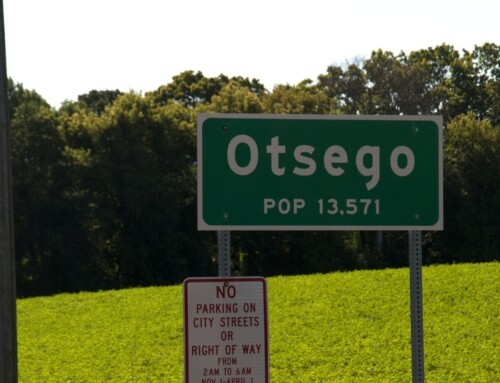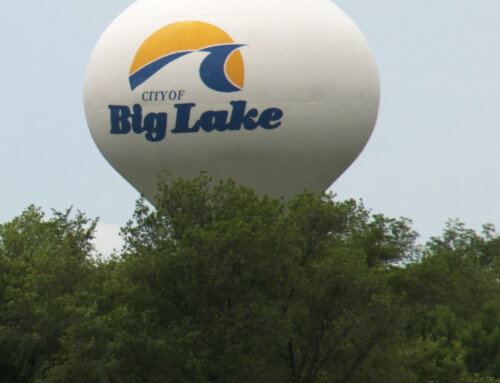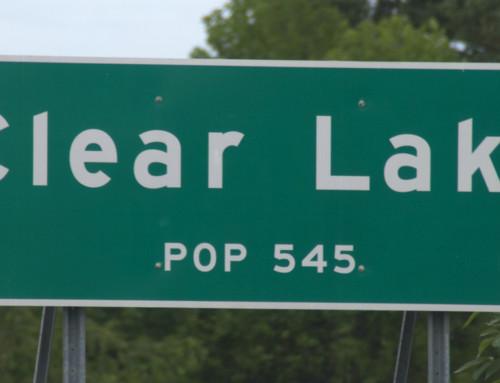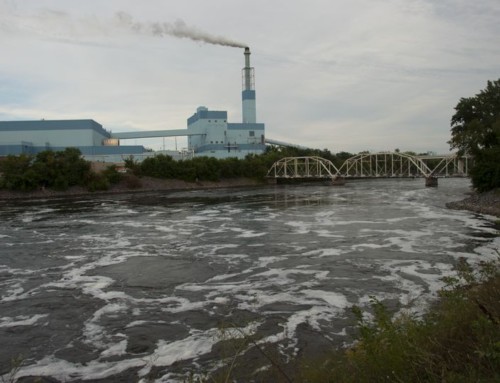Introduction
The village of Dakota anchors one end of the Apple Blossom Scenic Drive.
History
John Reed was a premature arrival in this area; he tried to open a trading post in the 1840s but the Dakota Indians, who still had legal claim to the land, evicted him. Jeremiah Tibbetts arrived in 1847 with a group of Dakota and built a small trading post; he gets the credit for coming up with town’s name. Nathan Brown, a native New Yorker, showed up in 1849 and organized the village. Brown could not get a trading license from the US government, either, but he successfully negotiated a deal directly with Chief Wabasha for trading rights.
The early settlers lived in an area known as Old Dakota that was platted in 1855. In 1873, the town was re-surveyed on higher ground. All development from that time forward took place in the new plat; nothing remains of Old Dakota. Dakota was devastated by a severe measles epidemic in 1882 that killed many residents and brought the town’s economy to a halt. When folks recovered, the village did a nice business shipping grain downriver. The town also got a boost from the arrival of the railroad in 1872, which, besides shipping people all over the Midwest, also shipped a lot of cattle before the Depression.
In the 1910s, the good folks of Dakota fought a battle with the War Department (the bureaucratic home of the Army Corps of Engineers, which has jurisdiction over shipping along the Mississippi River) over a proposal to shift the main channel of the river from the Minnesota side (in front of Dakota) to the Wisconsin side. Many residents made their living from working on the river and feared that changing the channel would hurt their business. They lost, and they were right. In 1951, the rail depot closed, but for a few years afterwards, locals could still board a passenger train by flagging down one of the trains as it passed through town. Like many of its neighbors, Dakota lost most of its older buildings to highway construction in the 1960s. Dakota today is a bedroom community.
Exploring the Area
The Apple Blossom Scenic Drive (507.895.2800) is a lovely route that loops ten miles from La Cresent to Dakota atop a ridge and down a coulee. Along the way, you pass by orchards, nice views (such as at the Apple Blossom Scenic Overlook), and retail stores selling seasonal produce.
Sports & Recreation
The 3,000-acre Great River Bluffs State Park (County Road 3; 507.643.6849) has seven miles of hiking trails, many of which end at dramatic overlooks of the river valley. In winter, you can explore nine miles of trails for cross-country skiing or snowshoeing. To reach the park, go west on Interstate 90 from Dakota to exit 267 and follow the signs. You’ll need to purchase a daily or annual vehicle permit to enter.
Parks Along the Mississippi River
Steve Morse Park (Center and River Sts.) is a small corner park with a gazebo and a river view and a pleasant place for a picnic lunch.
**Looking for more places to visit along the Mississippi River? Check out Road Tripping Along the Great River Road, Vol. 1. Click the link above for more. Disclosure: This website may be compensated for linking to other sites or for sales of products we link to.
Where to Sleep
Camping
Great River Bluffs State Park (County Road 3; 507.643.6849) has a 31-site campground atop the bluff, with plentiful shade and space but no electric hook-ups. Along US 61, there is also a five-site bicycle campground with a water source but no other services.
Resources
Post Office: 745 Frontage Rd.; 507.643.6555.
Community-supported writing
If you like the content at the Mississippi Valley Traveler, please consider showing your support by making a one-time contribution or by subscribing through Patreon. Book sales don’t fully cover my costs, and I don’t have deep corporate pockets bankrolling my work. I’m a freelance writer bringing you stories about life along the Mississippi River. I need your help to keep this going. Every dollar you contribute makes it possible for me to continue sharing stories about America’s Greatest River!
©Dean Klinkenberg, 2011,2017
